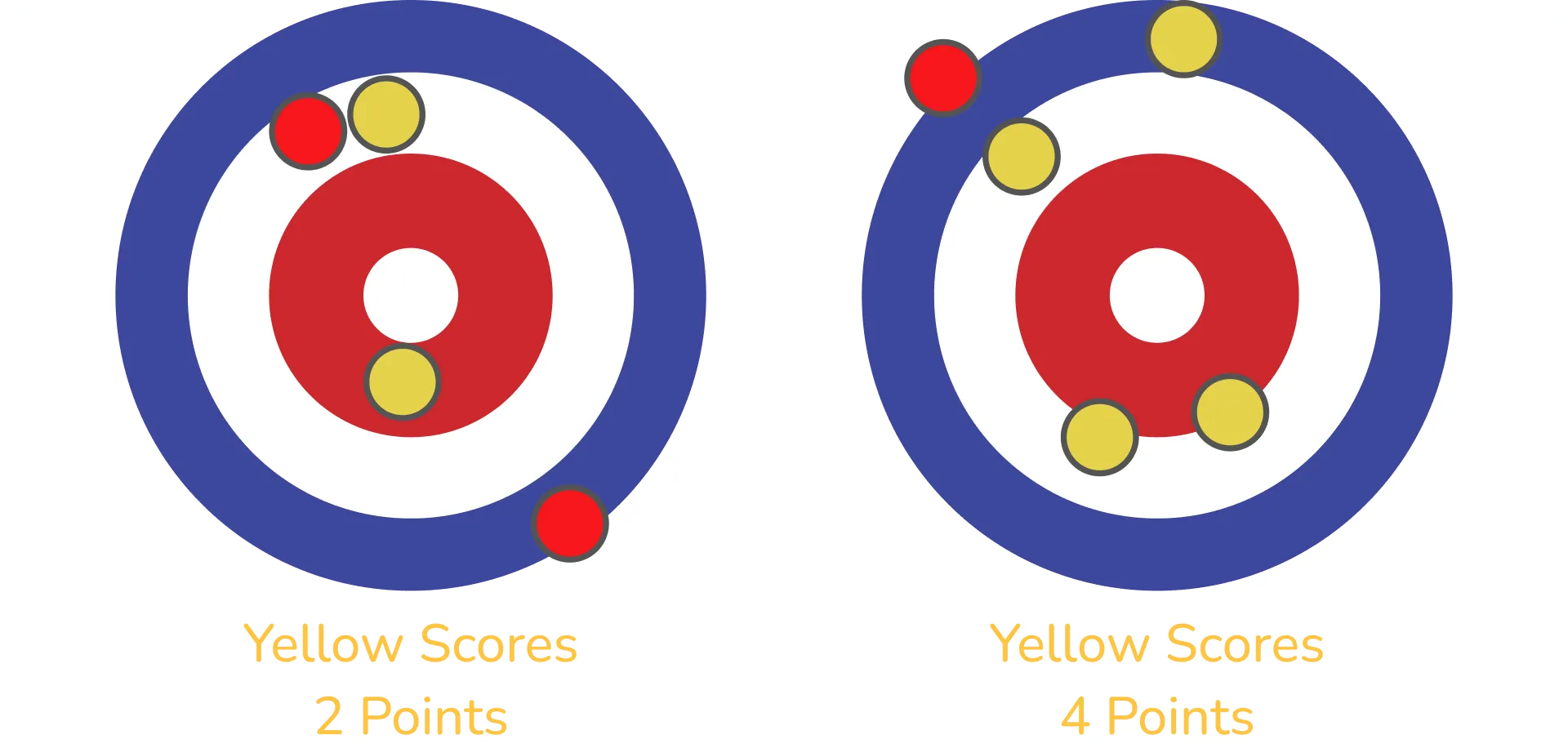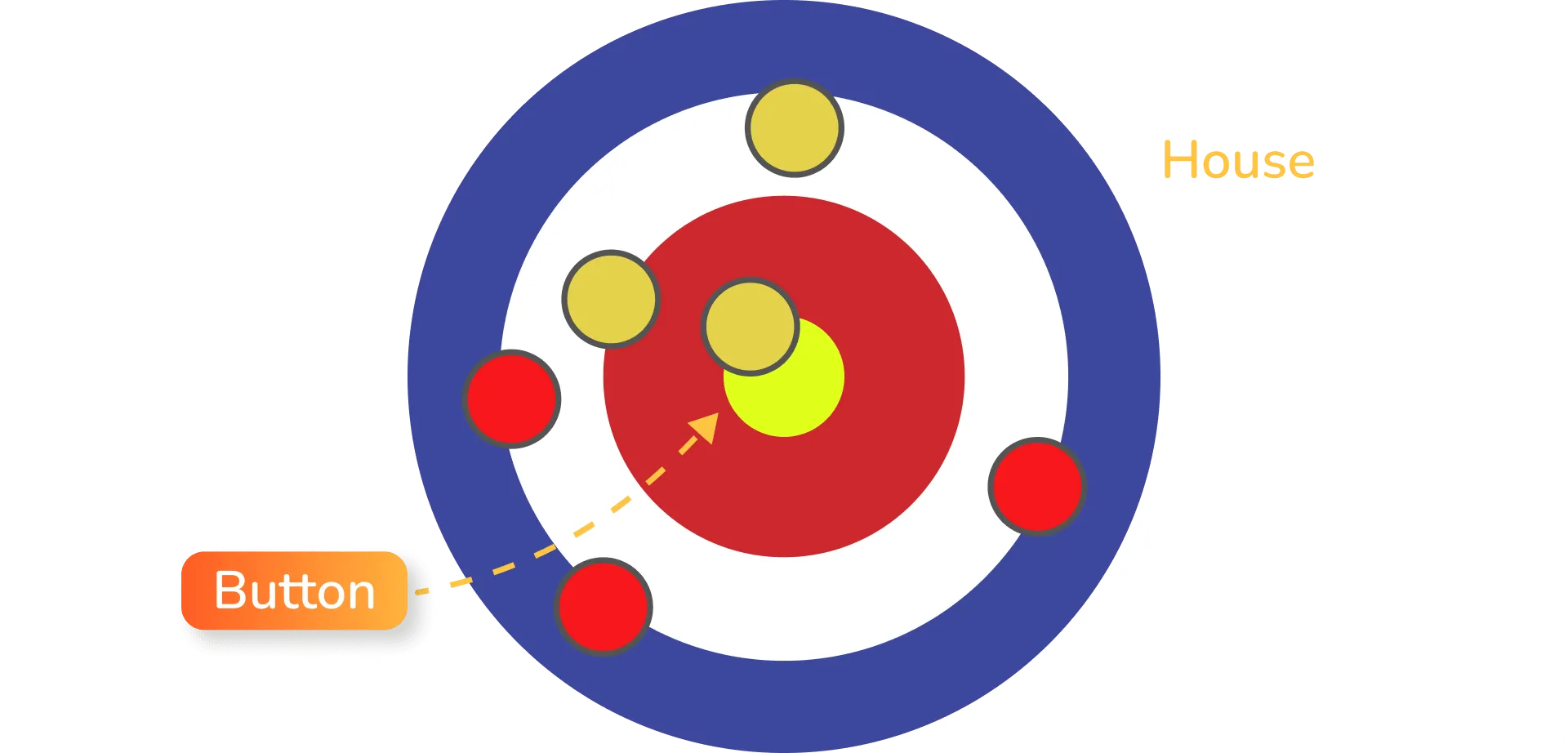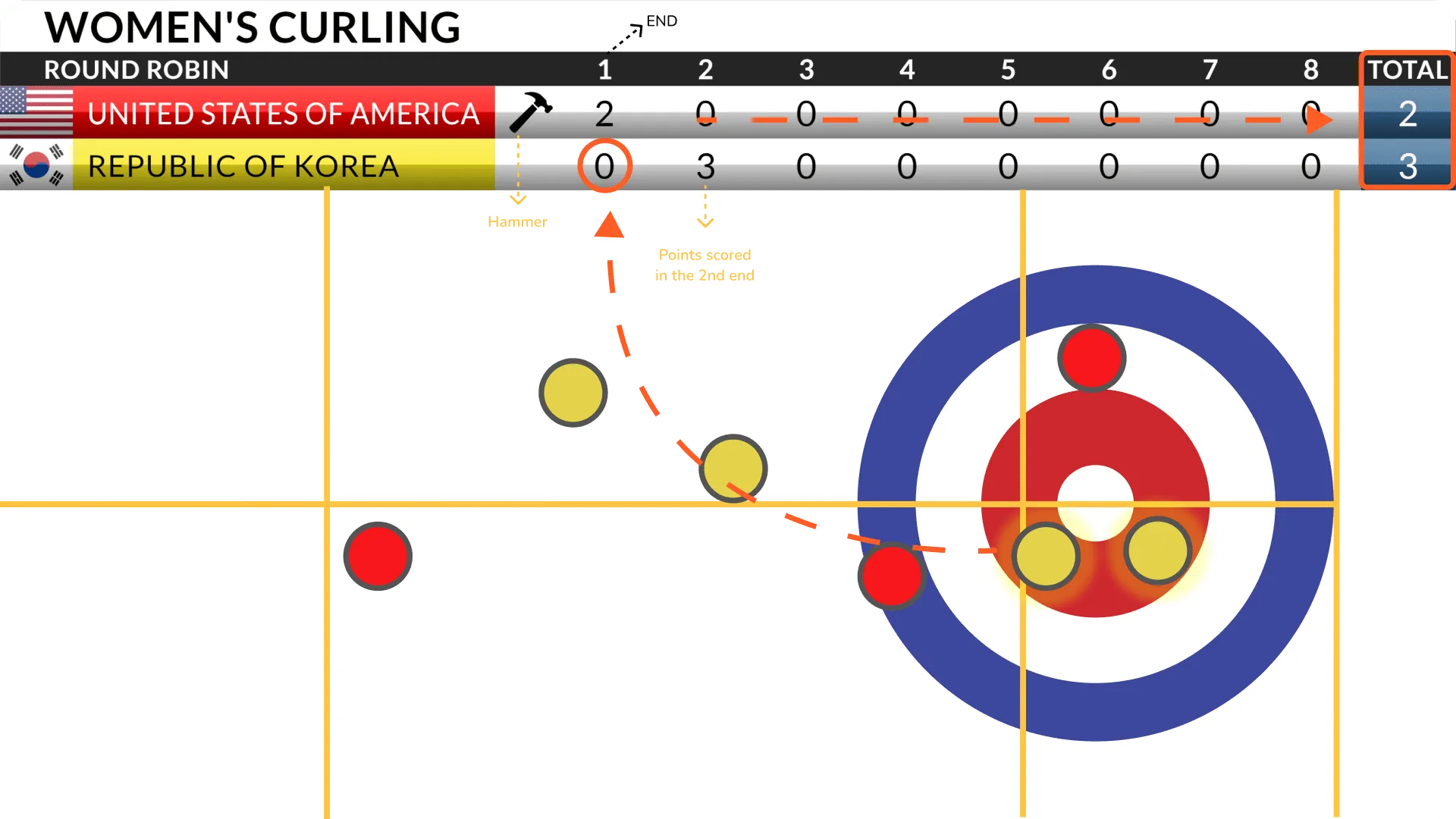Sign up for uno
Language
Often described as chess on ice, curling’s high strategy can make its unique points system a little hard to understand. How is it played? How does each team win points? What does the hammer mean in curling? Here’s how our guide on scoring in curling, and how to read a curling scoreboard.
Curling is a tactical game with a deceptively simple goal: get your stone as close to the center of the target as possible. There are a number of special terms and rules to curling that you can get into, but we’ll go through some of the basics.
In curling, two teams (also called rinks) take turns sliding (or throwing) stones called rocks over a sheet of ice towards a bullseye target, known as the house. The rocks ‘curl’ because they rotate when the thrower turns the handle clockwise or counterclockwise while releasing. Each rock must be released before the hog line, and must pass the second hog line.
Other members of the team reduce friction under the rock by sweeping, to help it travel further or in any particular direction.
A curling ice sheet is about 146 feet long by 15 feet – about the length of a hockey rink – with two houses at either end, aiming as close as they can to the center (called the button). Teams can throw eight rocks per round or period (which are called ends), and each player can throw two rocks. Teams aim at one house during odd-numbered ends, and the other house during even-numbered ends.

The colored rings don’t have any meaning for how many points you score, and are just there to help show which rock is closest to the button.
Only the team that has a stone closest to the center can score points during each end. A rock doesn’t have to be fully inside the rings of the house to count. As long as it overlaps the curve of the house, it’s in.
Every rock that is closest to the button and from the same team is equal to one point. You stop counting points as soon as the next closest stone belongs to the other team.

If there are no stones in the house when all eight stones have been played, that’s called a blank end. When a blank end happens, the hammer stays with the team.
‘Hammer’ is the name given to the last rock advantage, or simply, the chance for a team to throw the final rock of an end. A hammer is sometimes considered more valuable than a single point, and can be the difference between winning and losing.
At the start of the game, the hammer gets decided by a draw to the button. Two players from each team slide a rock to get it as close to the center of the house as possible. The one who gets it closest gets to decide who starts with the hammer.
If you lose a round, you get the hammer. If there’s no score and it’s a blank end, the hammer stays with the same team. Teams sometimes intentionally create a blank end, because a hammer can help you win the next end.
Uno has curling scoreboard overlays that are compatible with your favorite streaming software and platforms – including one that is commonly used in traditional scoring systems. Here’s an example of how you might read a curling score board.
In a hypothetical curling match, we’ve just finished the second end. In the previous end, the US team (team red) scored two points against Korea (team yellow). Now, the house looks like this:

This means that team Korea earned three points. Korea were the last to score, which means that the hammer is now with America, giving them the chance to take back the lead with last stone advantage in the third end.
Here’s what that would look like on our Standard Curling Scoreboard:

A traditional scoreboard will show the ends numbered from 1-10, the points earned during each end, and an icon to show which team has the hammer. Points are scored cumulatively, and are recorded in the total.
There are also more modern scoreboards that visualize different parts of the game, like our Standard Curling Scorebug. This scorebug shows how many stones have been thrown by each team. If the game was now in the third end, and each rink has thrown 6 stones each, this is what the scorebug would show:

Once you understand these basics, it should be easy to follow along with this unique sport during the Winter Olympics – and even use your own online curling scoreboard.
Setting up a professional live stream of your next curling match has never been easier. With overlays.uno, you can add a fully customizable, completely online curling scoreboard – without having to download any zip files! You can even control the uno overlay interface from your mobile phone or with our Stream Deck plugin. If you’re looking for more scoreboard overlays, sign up for free and start using any of uno’s online overlays today!